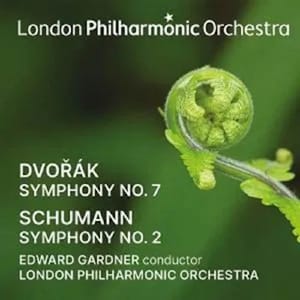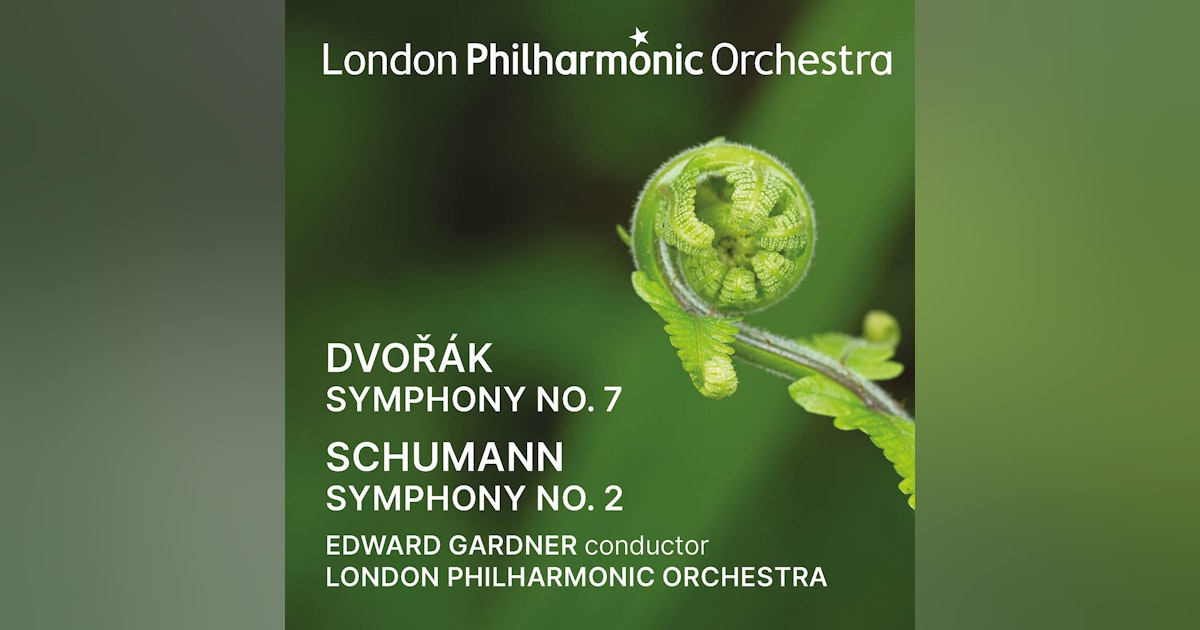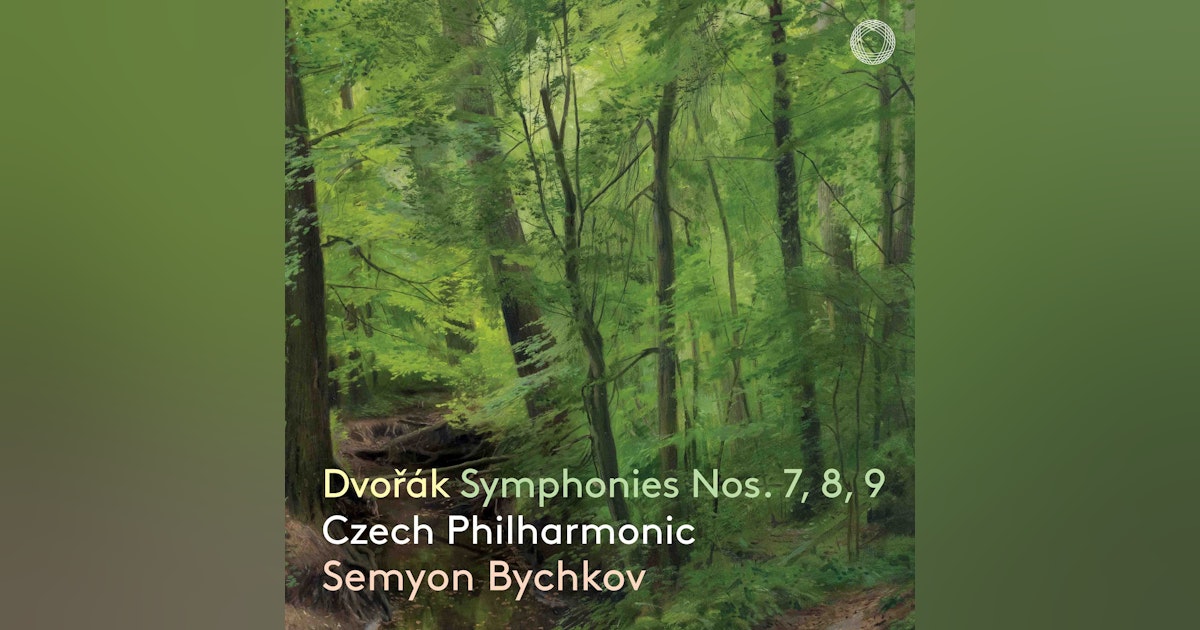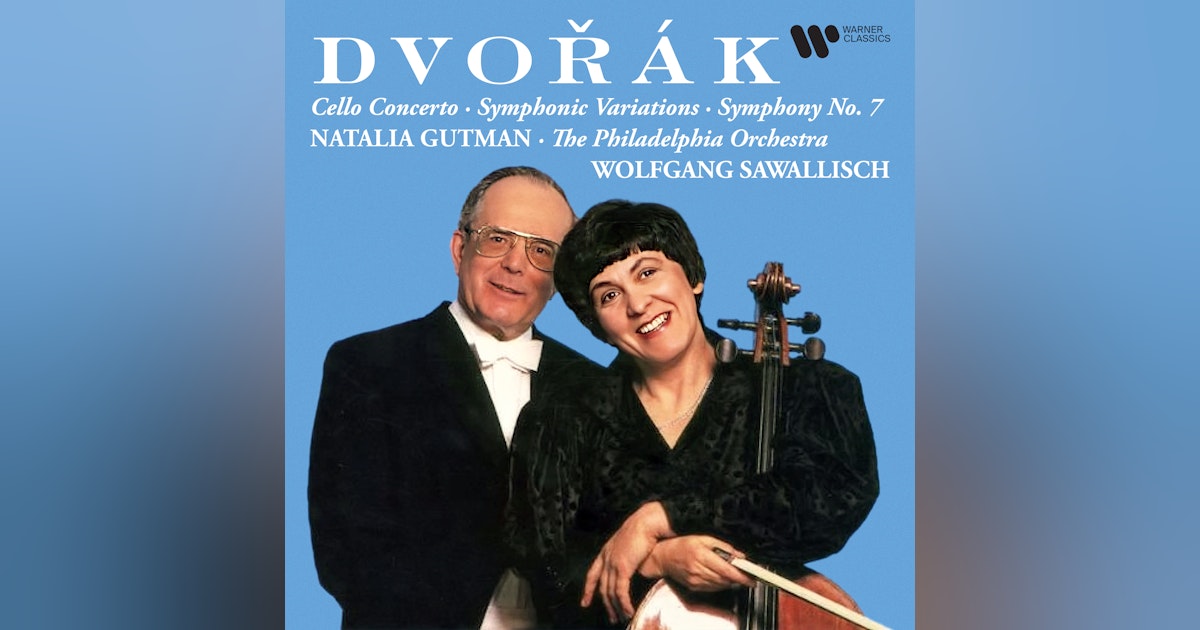
There’s a lot of Dvořák around in my pile of discs suddenly …
The LPO’s live series of disc has furnished us with Dvořák 7 coupled with Schuman Second. The LPO delivers a terrific, driven and yet dancing performance of the Dvořák under Edward Gardner, who still allows the music to flex and band naturally. High strings are fantastic; ; harmonic darkening are skilfully managed. It is rather rlenles, hough.
Gardner’s strength is his consistency of vision: the slow movement is not just pastoral Dvořák, but has echoes of the drama of the first movement. Here they are, so you can hear how they work so well together, one after the other:
The Scherzo has plenty of life, and the LPO’s woodwind really shine here, in the most overtly pastoral moments. The Scherzo’s end is maximally exciting; the dark clouds of the opening of the finale are arresting in context, the latter stages of the movement oscillating between moods, sometimes on a knife’s’s edge. A vital, refreshing performance.
One conductor whose name should be referenced here is Wolfgang Sawallisch. Thank goodness for Warner Classic’ huge boxes, therefore, whoch holds on disc 46 (!) his performances of Symphonis 7 ad 8 with The Philadelphia Orchestra, recorded in that city’s Memorial Hall in April 1989, and first released on EMI CDC 7 49948 2. The playing is glorious, the first movement tensile but not hard-driven. There is a layer of understanding here that perhaps eclipses Gardner, albeit only just.
And what joy to her this orchestra at its peak. The Poco adagio is resplendent, th music just glows for within. Sawallisch’s underfunding of Dvořák’s presses is complete, and his dollies in the woodwind and tons are beyond criticism. How they shine individually; how beautifully they work in couples; and as a unit, they are without parallel. Sawallisch can do rigour when required: we hear that more pronoucedly here, as if reminding us of the structural integrity of the this movement. The finale is magisterial.
As a Brucie bonus, here’s Sawallisch with the Philadelphia in the last thee of Dvorak’s symphonies! (ignore the YouTube labelling at the bottom – I think if I’m being charitable it might be referring to the photo, these are from Philadelphia). The video also includes the Cello Concerto, with Natalia Gutman:
Symphony No.7 in D minor, Op. 70 (00:00:00) 1. Allegro Maestroso (00:10:48) 2. Poco Adagio (00:20:58) 3. Scherzo- Vivace (00:28:22) 4. Finale- Allegro Symphony No.8 in G, Op. 88 (00:37:30) 1. Allegro Con Brio (00:47:31) 2. Adagio (00:58:09) 3. Allegretto Grazioso (01:03:39) 4. Allegro Ma Non Troppo Symphony No.9 in E minor, Op. 95, ‘From The New World’ (01:12:37) 1. Adagio, Allegro Molto (01:24:48) 2. Largo (01:37:29) 3. Scherzo (01:45:17) 4. Allegro Con Fuoco Cello Concerto in B minor, Op. 104 (01:55:51) 1. Allegro (02:10:36) 2. Adagio, Ma Non Troppo (02:23:06) 3. Finale- Allegro Moderato
The Bychkov is vey different from either of those, too. The first movement is expensive but on first at times feels almost fragmented. There is a bigger pace at work; the mood links directly to the opening of the finale, and it is the growth of that passage into the finale’s main trajectory that enables it all to make sense. even though Bychkov is in no rush.
The full YouTube playlist for the Pentatoe Bychkov set is here.
That first movement is here:
I do find the Czech upper strings surprisingly lacking in body on occasion in thsis performance.
And, while we’re here, huzzah for the coupling on the LPO disc! Schumann’s most neglected symphony – but why? It’s a magnficent piece. Toscanini believed in it, and actually some of his best performances are of this piece (I’m more in the Furtwängler camp generally, personally, but worth mentioning his is an exception!). It is odd that this piece is one of the few in which I really do like Toscanini – often I find him hard-driven: the 1946 NBC pefomance is lean and sinewy.
Gardner pinpoints the Mendelssohn background to the Scherzo while finding power in the first movement. The Adagio espressivo, surely one of Schuman’s greatest outpourings, is so tender and heartfelt, dissonances cutting to the quick, Listen to the strings at the opening, sounding gorgeous, and how the oboe solo goes so naturally from them. This is organicism in music: an awakening, a bud flowering at dawn. The layering later in the movement is perfect, the strings with their onward tread against the aching lyricism of the woodwind. and each and every one of Schumann’s harmonic twists and turns is fully honoured:
The sense of exhilaration in the finale is brilliant. Gardner uses Schumann’s orchestration to his advantage; focused rather than over-upholdtered, and Gardne’s decisions are harmony-driven. A fantastic performance of.great piece. Wish I had been there!
And here’s the Toscanini / NBC:
Back to the main thrust of today’s post: These are not the first Dvořák Sevenths on Classical Explorer: Inkinnen and the Deutsche Radio Philharmonie on SWR Music was featured previously here (it looks like SWR have taken some of the YouTube links off though!).
The LPO is available as an Amazon download here; the Bychkov Czech PO symphonies 7-9 is here; the Sawallisch Warner box is here at a rather pricey £106.25. Streaming below, including the Sawallisch via a Warner single disc incarnation (coupled with that Natalia Guman Cello Concerto and the Symphonic Variations). Looking at the links via the disc covers, it seems Pentatone and the LPO label Agee that this symphony is green in colour!:











